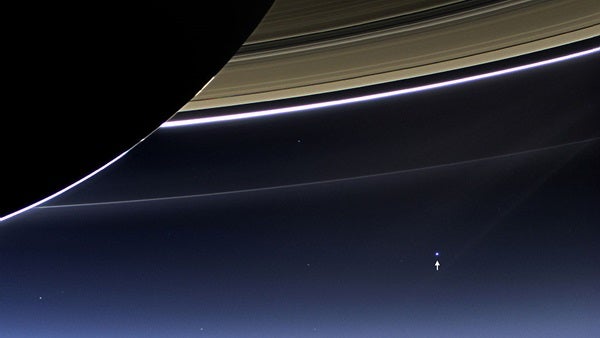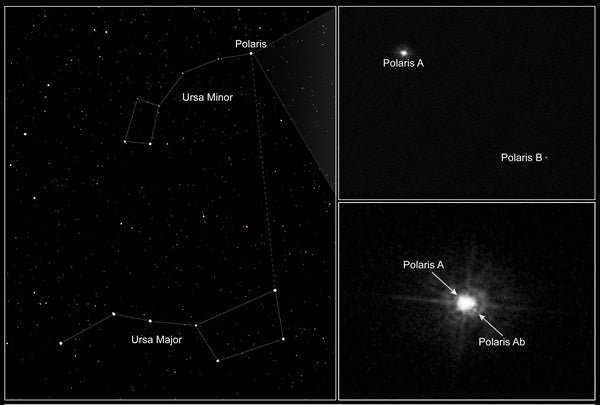Friday, June 17
• The waxing gibbous Moon forms the apex of a flat isosceles triangle with Mars and Saturn tonight. The Moon stands highest and about 10° from both planets; Mars and Saturn lie approximately 18° apart.
Saturday, June 18
• The Moon passes 3° due north of Saturn at 8 p.m. EDT. For observers in North America, the two appear between 3° and 5° apart throughout the night.
Sunday, June 19
• Full Moon officially arrives at 7:02 a.m. EDT tomorrow morning, but it looks completely illuminated throughout the night. It appears low in the southeast as the Sun sets and reaches its peak in the south around 1 a.m. local daylight time. For North American observers, the Full Moon crosses from Ophiuchus the Serpent-bearer into Sagittarius the Archer during the evening hours.
• Mercury shines brightly in morning twilight this week, standing 5° high in the east-northeast a half-hour before sunrise today. The inner planet glows at magnitude –0.6 and shows up easily through binoculars if you have an unobstructed horizon. Look carefully and you might also glimpse 1st-magnitude Aldebaran 4° to its south (lower right). When viewed through a telescope, Mercury appears 6″ across and about two-thirds lit.
Monday, June 20
• Earth’s summer solstice occurs at 6:34 p.m. EDT, when the Sun reaches its farthest point north in the sky. The solstice marks the official beginning of summer in the Northern Hemisphere, and today has more hours of sunlight than any other. For astronomy buffs, however, long days translate into short nights and extended twilight, which limit our time under the stars.
Tuesday, June 21
• Asteroid 10 Hygeia currently lies near the border between the constellations Leo the Lion and Virgo the Maiden. This region lies about one-third of the way from the southeastern horizon to the zenith after evening twilight fades away. Tonight, you can find the 11th-magnitude asteroid 1° due south of the 4th-magnitude star Upsilon (u) Leonis.
Wednesday, June 22
• Magnificent Saturn reached its peak earlier this month, when it appeared opposite the Sun in the sky, and our view of the ringed planet remains spectacular. It is on display nearly all night among the background stars of southern Ophiuchus, hanging in the southeastern sky as darkness falls and climbing highest in the south around 11:30 p.m. local daylight time. Saturn continues to shine brightly, too, at magnitude 0.1. When viewed through a telescope, the planet measures 18″ across while the dramatic ring system spans 42″ and tilts 26° to our line of sight. This evening also provides an excellent view of the gas giant’s large family of moons. The most obvious is 8th-magnitude Titan, which appears northeast of the planet. Next, look for the 10th-magnitude trio of Tethys, Dione, and Rhea. They appear in a straight line northwest of Saturn and closer to the rings. Finally, target 10th-magnitude Iapetus well to the west of Saturn. Don’t confuse any of these satellites with the brighter, 6th-magnitude star SAO 184541, which appears between the planet and Iapetus.
Thursday, June 23
• Mars remains near its peak all this week. The Red Planet reached opposition and best visibility a month ago but, like Saturn, has not declined much. Mars appears almost due south and at its highest as twilight fades to darkness. The world shines at magnitude –1.5 against the much fainter background stars of Libra. When viewed through a telescope, Mars’ orange-red disk spans 17″. Look for subtle dark markings along with a whitish north polar cap.
Friday, June 24
• Brilliant Jupiter appears high in the west as darkness falls and remains on display until midnight local daylight time. The giant planet shines at magnitude –1.9 against the backdrop of southern Leo the Lion. Jupiter appears equally dazzling through a telescope, which reveals a wealth of atmospheric features on a disk that spans 35″.
Saturday, June 25
• Look high in the northwest after darkness falls this month, and you’ll be greeted by the familiar sight of the Big Dipper. The Dipper is the most conspicuous asterism — a recognizable pattern of stars that doesn’t form a complete constellation shape — in the entire sky. It forms the body and tail of Ursa Major the Great Bear. Use the Pointers, the two stars at the end of the Dipper’s bowl, to find Polaris, which lies due north for everyone north of the equator. Polaris marks the end of the Little Dipper’s handle. On June evenings, the relatively faint stars of this dipper arc directly above Polaris.
Sunday, June 26
• If ever there was a good time to track down Pluto, this is the night. The distant world passes just 2.7′ due south of the 3rd-magnitude star Pi (p) Sagittarii in northeastern Sagittarius, making the task of finding the dwarf planet much easier than usual. Pluto glows dimly at magnitude 14.1, however, so you’ll need an 8-inch or larger telescope to spot it visually.












